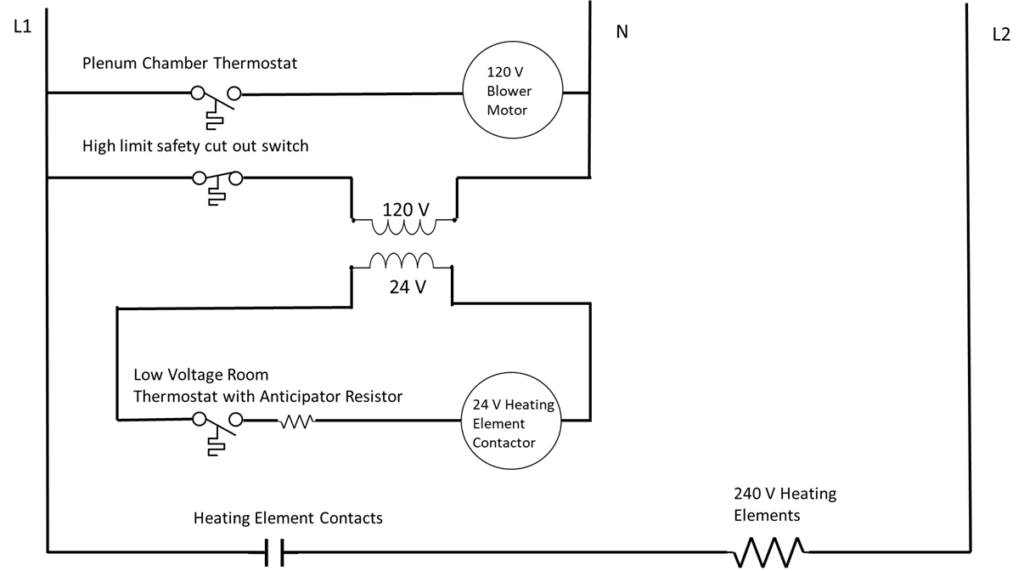Heating
12 Central Electric Heat
Click play on the following audio player to listen along as you read this section.
https://video.bccampus.ca/id/0_mobcjq8c?width=608&height=70&playerId=23448552
A central electric furnace is comprised of a large bank of resistive heating coils, and a blower motor that pushes air across them. Most furnaces allow for the installation of air filters to help purify the air as it circulates through the building.
Control of the furnace comes from a low-voltage thermostat installed in a central location of the house. This room thermostat energizes a 24V solenoid contactor, which in turn energizes the 240V heating elements. As the temperature in the plenum chamber rises, eventually the blower motor thermostat engages and begins to push heated air throughout the building.

The furnace houses the relays which control the heating elements. These are normally switched on and off in increments of 5 kW or less. This helps reduce the strain on the line due the heavy currents drawn when large heating loads are all switched on simultaneously. This helps reduce the flickering of lights and other under voltage concerns in parallel circuits.
The furnace will also contain a high temperature safety cut-out switch that will disconnect all power to the heating elements if the temperature rises above a pre-set safety threshold. This can happen if the blower fan fails to engage and drive the heated air through the house, and thus draw cool air into the plenum chamber.
Electric furnaces are sized according to their power consumption and can generally range anywhere from 5 kW to 40 kW, and be supplied with either single-phase voltage for household use, or three-phase voltage for industrial and commercial heaters, depending upon the availability at the point of installation.
The main unit in a central electric heating system. Consists of air handler unit, resistive heating coils and control devices.
A motor that drives air in force-air systems.

